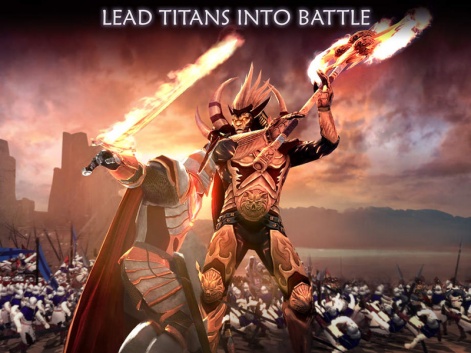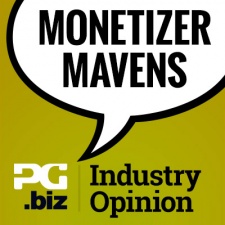During its recent earnings call, Zynga said it was delaying the release of Natural Motion's Dawn of Titans (which has been in soft launch since March 2015) into 2016.
Its justification was...
"given how strong the early monetization is for the game, we believe that a move of 200 basis points in day 30 retention has the potential to make the game a breakout hit."
So the question we asked our expert Monetizer Mavens was:
- From your experience, is a 200 basis points (2%) increase in day 30 retention so significant a metric, even/especially for a $1 billion company such as Zynga?
My immediate thought was "ooh, they're using stock market language".
They want investment analysts to believe that Zynga has extremely precise models, just like the precise but spurious models that analysts use.

So this is designed to make analysts feel good about the delay, more than being the real internal reason."
But I'm having a cynical 2015, so it might just be me.

Author of Freemium Economics, published by Elsevier in 2014: http://amzn.to/19zaPQB
Owner / Editor at Mobile Dev Memo: http://mobiledevmemo.com
I agree, I found the usage of "basis points" really odd.
I've never heard anyone in gaming refer to changes in retention rates that way; my initial reaction was to think that it was used to make the delay look more exactly purposeful than it probably is.

Aside from the terminology, if a game in soft launch increased its d-30 retention by 2%, would that be a significant rise?

A game design and monetization analyst with professional gaming background and degrees in Social Sciences, Economics and Probabilities and Statistics, Dimitar also writes the Freemium Game Designs blog.
We know that the most successful games on the store right now - Game of War and Clash of Clans, for example, boast with D30 retention being fairly close to their D365 retention at above 10%.
In that context, the D30 retention can definitely be interpreted as a key indicator for the long-term success and market viability of a product.
D30 retention can definitely be interpreted as a key indicator for the long-term success and market viability of a product.Dimitar Draganov
Monetizing players initially is a good indication for product quality and well designed first time user experience that leads to decent conversion, but freemium has always been about the long-tail of the distribution and having troubles with D30 usually signals a fundamental design problem that one should make everything in his power to amend before global launch.
If we also consider the persistent trend of more and more revenue being concentrated in the top 10% of payers in a game - according to Swrve in 2014 the top 15% of payers were responsible for 50% of revenues, whereas in 2015 the top 10% of payers are responsible for 64% of the revenue - I see a clear trend of increasingly sophisticated whale-hunting being supported by exponential improvements in customer service and whale-serving content extensions.
The evolution of successful mobile games is currently completely dominated by the need to make whales stay and this leads me to believe that it's not the 200 basis points per se that bothers Zynga, but possibly an increased churn of whales or even more likely a low proportion of whales in the game.

Since whales take the longest of time to convert - some studies report them as taking 18 days to convert on average - issues with D30 retention can already signal a decreased proportion of whales in the payer population.
Let's look at it another way.
An oft-quoted industry standard is D1: 40%, D7: 20%, D30: 10%.
Obviously this works better with games that draw back multiple times a day, every day, like Clash of Clans, but they were go.
Lifting D30 retention by 2% from 8% to 10% is a an increase of 200 basis points, but also an increase of 25%.
Based on Dimitar's points below, that's potentially an increase in life time revenue of 25%, that's a lot. If they are trying to get from 6-8%, that's even more.
D30 is critical. As Ben [Cousins] has said before [in other Maven discussions], it is much easier to move the needle on monetisation post-launch than it is to move the retention metrics.
And I agree with Dimitar that poor D30 retention suggests a game that has good initial appeal but has not figured out what will give it the longevity that marks out the real winners in this market.
And they are superfans, not whales!

Jordan Blackman is a lead designer and producer with over ten years of experience designing, producing, and managing hit content for companies like Zynga, Ubisoft, NovaLogic, & Disney.
Over 80 million people have played games that Jordan worked on as either a producer or designer.
Jordan’s credits include Lead Designer on FrontierVille & CastleVille, Senior Producer and Original Concept on CSI: Crime City (Facebook), Producer on Delta Force: Black Hawk Down, and Writer on Joint Operations: Typhoon Rising.
Nicholas and Dimitar nailed this. Yes, it matters a lot because it’s 2% from the very top of the funnel, which is a much larger percent down inside the funnel at d30 as Nicholas shows quite clearly.
Using basis points is actually helpful in clarifying compared to “2% increase in d30 retention” which could be easily misunderstood. Combine that with Dimitar’s detailed and thoughtful insights on how important retaining superfans are, it’s clear that this is a significant goal.
I want to add to these great points one small thing: Given the competitive paid acquisition landscape, it’s these increases in performance that create a margin for success at the top of the market.
When so much of revenue goes back into ads, a 2%/20%/200 basis point boost to d30 players can absolutely be the difference between a base hit and a home run.

Author of Freemium Economics, published by Elsevier in 2014: http://amzn.to/19zaPQB
Owner / Editor at Mobile Dev Memo: http://mobiledevmemo.com
If I use my LTV model and set the reference point to:
- D1: 50%, D7: 25.10%, D30: 12.55%
I get a player lifetime of 37 days.
If Zynga is trying to achieve the D30 increase by shifting the entire retention curve upwards, then in order to achieve a 2% increase to D30, they'd need to achieve an 8% increase in D1 retention (to 58%).
This shifted retention curve creates a player lifetime of 43 days - assuming monetization stayed the same in this new game (almost certainly a faulty assumption), then LTV increases by 27%.
That's a meaningful increase.























